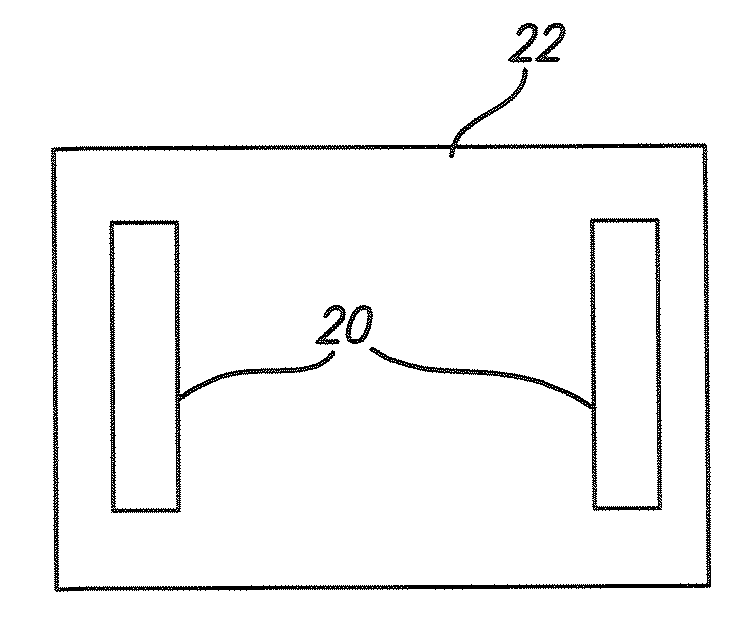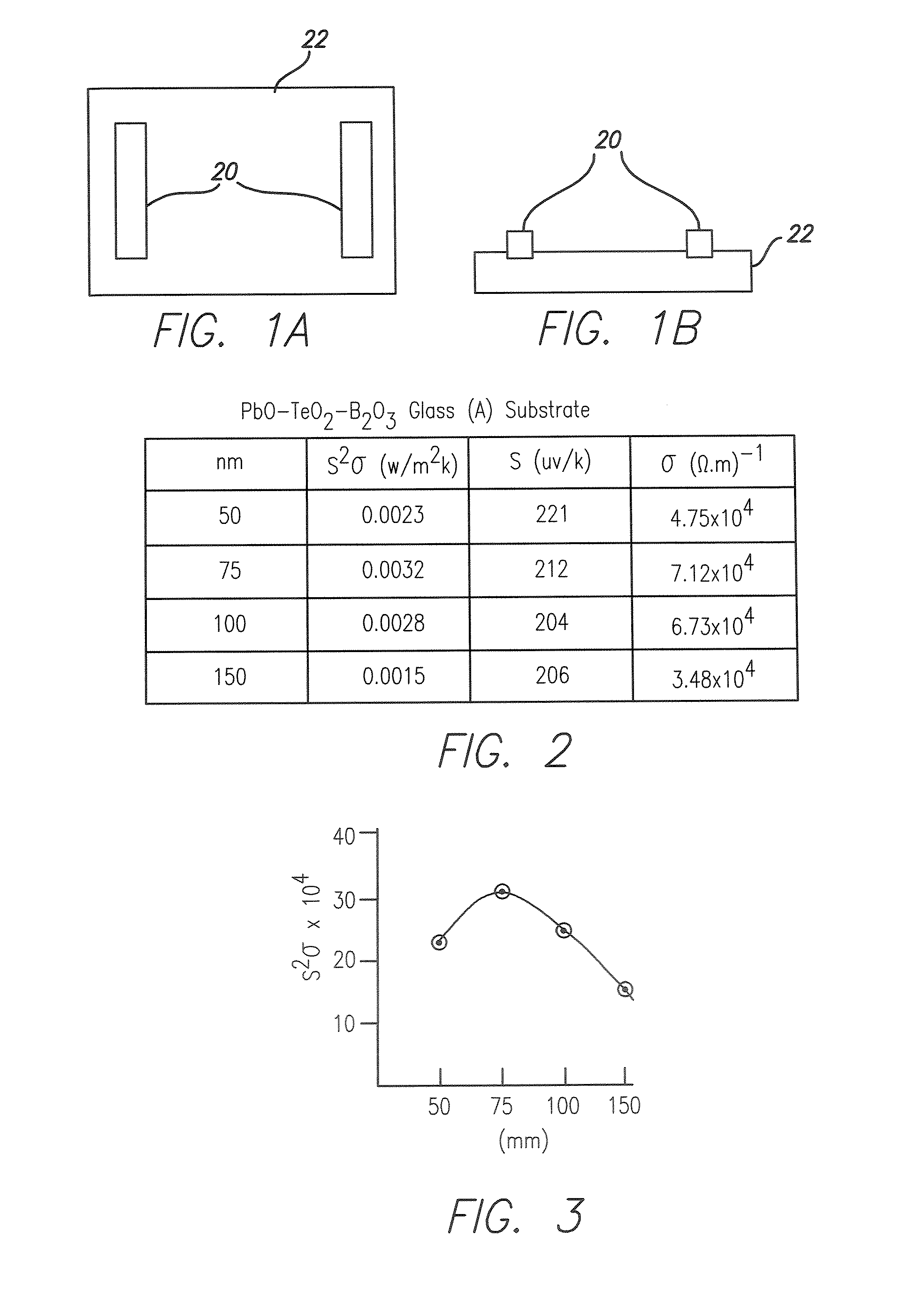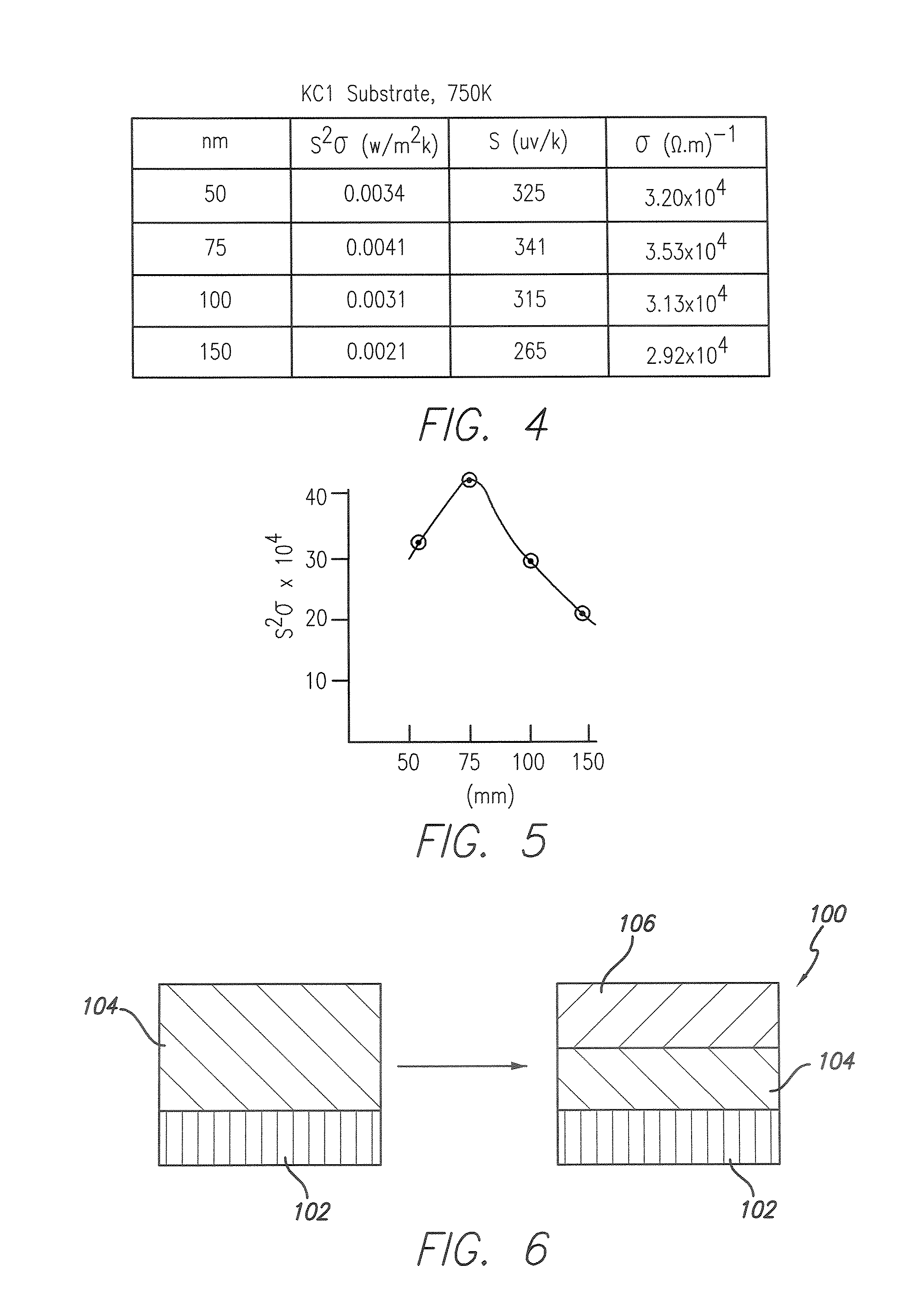Thermoelectric device produced by quantum confinement in nanostructures
a nano-structure, quantum confinement technology, applied in the manufacture/treatment of thermoelectric devices, thermoelectric device details, electrical apparatus, etc., can solve the problems of low efficiency, the thermoelectric technology industry standard cannot be functionally integrated into everyday heating and cooling products and systems, and the promise of practical thermoelectricity has not yet been fulfilled, etc. , to achieve the effect of increasing oxidation time, increasing oxidation time, and decreasing the thickness of the thermoelectric film
- Summary
- Abstract
- Description
- Claims
- Application Information
AI Technical Summary
Benefits of technology
Problems solved by technology
Method used
Image
Examples
Embodiment Construction
[0039] In the following paragraphs, the present invention will be described in detail by way of example with reference to the attached drawings. Throughout this description, the preferred embodiment and examples shown should be considered as exemplars, rather than as limitations on the present invention. As used herein, the “present invention” refers to any one of the embodiments of the invention described herein, and any equivalents. Furthermore, reference to various feature(s) of the “present invention” throughout this document does not mean that all claimed embodiments or methods must include the referenced feature(s).
[0040] Before starting a description of the Figures, some terms will now be defined.
[0041] Bulk Material: Macroscopic-sized thermoelectric materials that are typically larger than 1 micron or 1 micrometer in all three dimensions.
[0042] Chalcogenides: Group VI elements of the periodic table.
[0043] Chemical Vapor Deposition: Deposition of thin films (usually diele...
PUM
| Property | Measurement | Unit |
|---|---|---|
| thickness | aaaaa | aaaaa |
| thickness | aaaaa | aaaaa |
| thickness | aaaaa | aaaaa |
Abstract
Description
Claims
Application Information
 Login to View More
Login to View More - R&D
- Intellectual Property
- Life Sciences
- Materials
- Tech Scout
- Unparalleled Data Quality
- Higher Quality Content
- 60% Fewer Hallucinations
Browse by: Latest US Patents, China's latest patents, Technical Efficacy Thesaurus, Application Domain, Technology Topic, Popular Technical Reports.
© 2025 PatSnap. All rights reserved.Legal|Privacy policy|Modern Slavery Act Transparency Statement|Sitemap|About US| Contact US: help@patsnap.com



